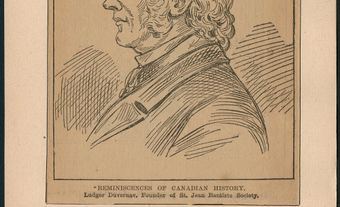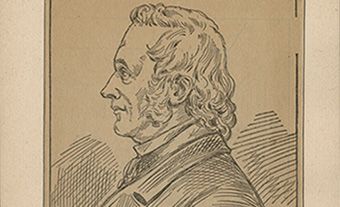This article was originally published in Maclean's Magazine on August 3, 1998
Southam-Sun Paper Swap
The principal business of Southam Inc. is delivering news to the public, but that commitment does not necessarily extend to the company's own operations. After Conrad Black, chief executive officer of Southam, announced plans last March to launch a national newspaper this fall, key details - including such basics as its name and design - were kept secret even from staff members. And when negotiations began in early July to buy The Financial Post from Sun Media Corp., only four executives at Southam and its parent, Hollinger Inc., knew of the ongoing effort. Most employees of the new paper - where plans are now being completely altered - learned of the deal as rumors began surfacing three days before it was announced on July 20. And the publishers of four newspapers that were traded to Sun Media as part of the package found out their fate just that day in an 8:45 a.m. phone call from Don Babick, Southam's chief operating officer, to them. Said Babick: "It was hard and painful to keep this quiet from our people, but we had no choice."
Now, Canadian print journalism is about to be transformed again - as has happened several times since Black acquired control of Southam in August, 1996. The terms of the deal are straightforward, and market analysts say, positive for both sides. Southam acquires the Post and $150 million. In return, Sun Media establishes itself as the largest force in the lucrative southern Ontario market by acquiring four newspapers: The Hamilton Spectator, Kitchener-Waterloo's The Record, The Cambridge Reporter and The Guelph Mercury. The deal, officials on both sides say, will likely close by mid-September at the latest. Those new holdings, along with The Toronto Sun, The London Free Press, and several smaller newspapers, will give Sun Media newspapers a circulation in the region of 580,000 daily, compared with the 515,000 circulation of The Toronto Star. Said Sun Media CEO Paul Godfrey, who negotiated the deal: "We have always said we are in this business to grow, not remain static, and again, we've proven that."
The advantages for the two companies are clear - and so are potential problems. Southam, in one move, has eliminated a competitor, and acquired an established product around which to build its national newspaper. The Post, in its present form, is likely to cease to exist: instead, Babick said, the new national daily will be a general-interest broadsheet, although it will have an extensive business section staffed largely by present Post employees. Instead of the estimated $130 million Southam expected to lose over the next five to seven years with the new newspaper, it has collected $150 million in cash - and some senior Southam officials now express the hope that the new paper will be profitable within less than half that time. On the negative side, it has given up four profitable newspapers and picked up a newspaper that had its first-ever profitable year as a daily last year - in a booming economic environment that is unlikely to continue. "People say the Post turned a corner last year," says Roger Parkinson, publisher of the rival Globe and Mail. "But you have to ask if that will look like a corner or an aberration when the next recession comes."
The Sun group, in turn, has gained money-making newspapers that are located close to each other geographically, which will in future allow for some cost savings through sharing of staff and services, and offer added incentives for advertisers. The new properties have combined annual revenues of about $130 million, and Southam sources have said in the past that returns on revenue on some small Ontario newspapers exceed 30 per cent. And in selling The Financial Post, the company has shed the property most vulnerable to the upcoming national newspaper war. "We now have a selection of monopolies in key markets, and the financial security that implies," says Godfrey. The downside is that the Sun group's debt by the end of this year is expected to reach $450 million, up from $362 million last year.
Still, in the wake of the deal, market analysts were bullish on both companies. "The market never likes uncertainty, and there was a lot of that attached to Southam's new paper," said Bill Wolfenden, an analyst at Deacon Capital Corp. in Toronto. "Now, they have removed much of that." And, said Mark Mettrick, an analyst with Standard and Poor's: "The Sun group now has more debt, but we are satisfied that their increased revenue will do a lot to deal with that." Conceded Godfrey: "We are pretty much stretched as far as is comfortable now." But Standard and Poor's affirmed existing ratings on Sun Media and Hollinger, and shares in both companies rose by more than $1.
That does not remove uncertainty surrounding the direction in which both companies will take their new properties. Many questions remain about Southam's national daily. In an interview at week's end, Babick said the planned Oct. 5 launch date "might be something we have to move away from." Then, there are key staffing decisions. The new paper already has a publisher (Babick), an editor-in-chief (Kenneth Whyte), and other personnel hired for senior management positions - as does The Financial Post. Whyte appears certain to run the national daily, while the fate of others, including Financial Post publisher William Neill and Maryanne McNellis, the vice-president of news, have not been decided. Overall, Babick says: "We plan to integrate all Post employees into Southam." Most will move to the newsroom of the new daily - which, to their chagrin, means forsaking their downtown Toronto offices for Southam's newly built newsroom in its head office in suburban Don Mills. Some may be assigned to other newspapers, and Babick did not rule out layoffs or buyouts in the long term.
Some things have not changed: the Southam daily has no name, and its direction is no more clear. Babick says that "we need to sit down with the Post people to talk about the future, and we cannot do that till the deal is formally complete." A new name is likely to be announced within the next two weeks. One potential choice: The National Post.
Meanwhile, one of Godfrey's first tasks after acquiring the new newspapers was to assure their employees that no major changes are planned. All are traditional broadsheets, while most Sun newspapers are characterized by their tabloid format, racy writing style and cheesecake pictures of partially clad men and women, the notorious Sunshine Boys and Sunshine Girls. "Our attitude is that if it ain't broke, don't fix it, and they ain't broke," said Godfrey in an interview. As well, he promised: "There will be no new Sunshine girls." The experience at The London Free Press, which the Sun bought last year, supports that assertion. The newspaper has remained a broadsheet with its staff largely unchanged - except that morale is much higher now, according to Norman DeBono, a reporter and chair of the paper's unit of the Southern Ontario Newspaper Guild. "We expected the worst, but have been pleasantly surprised," he says. The union has signed a three-year contract providing for raises of two per cent each year, pension benefits have been improved, and, adds DeBono, "as reporters, we have been made to feel involved in ways that did not exist before."
Still, there are uncertainties. At The Hamilton Spectator, publisher Patrick Collins was in the final stages of choosing a new editor-in-chief when the sale took place. That decision has now been delayed. And the Spectator, which has about the same circulation as The London Free Press but about 50 more newsroom employees, may face layoffs. There has always been an overlap in circulation between the Kitchener-Waterloo Record (circulation 66,000) and Cambridge Reporter (circulation 9,500). Now, there is speculation that the Reporter might be absorbed by The Record.
The deal that opened such possibilities seemed implausible as recently as a month ago, according to Godfrey. "I was not prepared to give up The Financial Post without acquiring properties in return," he says, "and I presumed Southam would not do that." Then, he received a call from Southam deputy chairman David Radler, the company's financial guru. That led to intensive face-to-face meetings involving the two men, Southam lawyer Peter Atkinson, and Sun Media lawyer Dale Lastman. "Radler and I are both hard-nosed dealmakers," says Godfrey. "At times, Dale and Peter had to move fast to bring the temperature down."
Still, both sides were satisfied to the point where they made a co-operative deal: the Southam daily will be printed at the soon-to-be-Sun-owned printing plant at The Hamilton Spectator. "I think we came away with a better regard for each other," says Southam's Babick. And the Globe and Mail's Parkinson, preparing for battle, has at least backhanded praise for his competitors. "Two companies have moved from positions of weakness to become less weak," he says. "Now, we have a better look at who we'll be fighting." Those are strong words from the outwardly genial Parkinson - and appropriate for the toughened competition he now confronts.
Maclean's August 3, 1998

 Share on Facebook
Share on Facebook Share on X
Share on X Share by Email
Share by Email Share on Google Classroom
Share on Google Classroom


